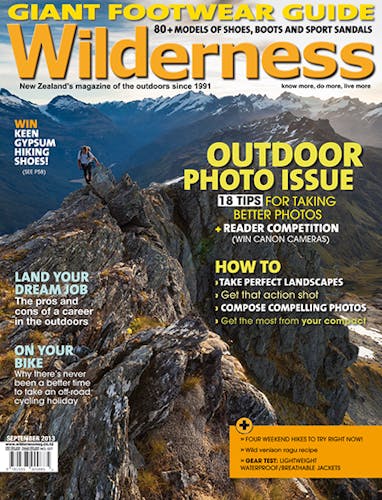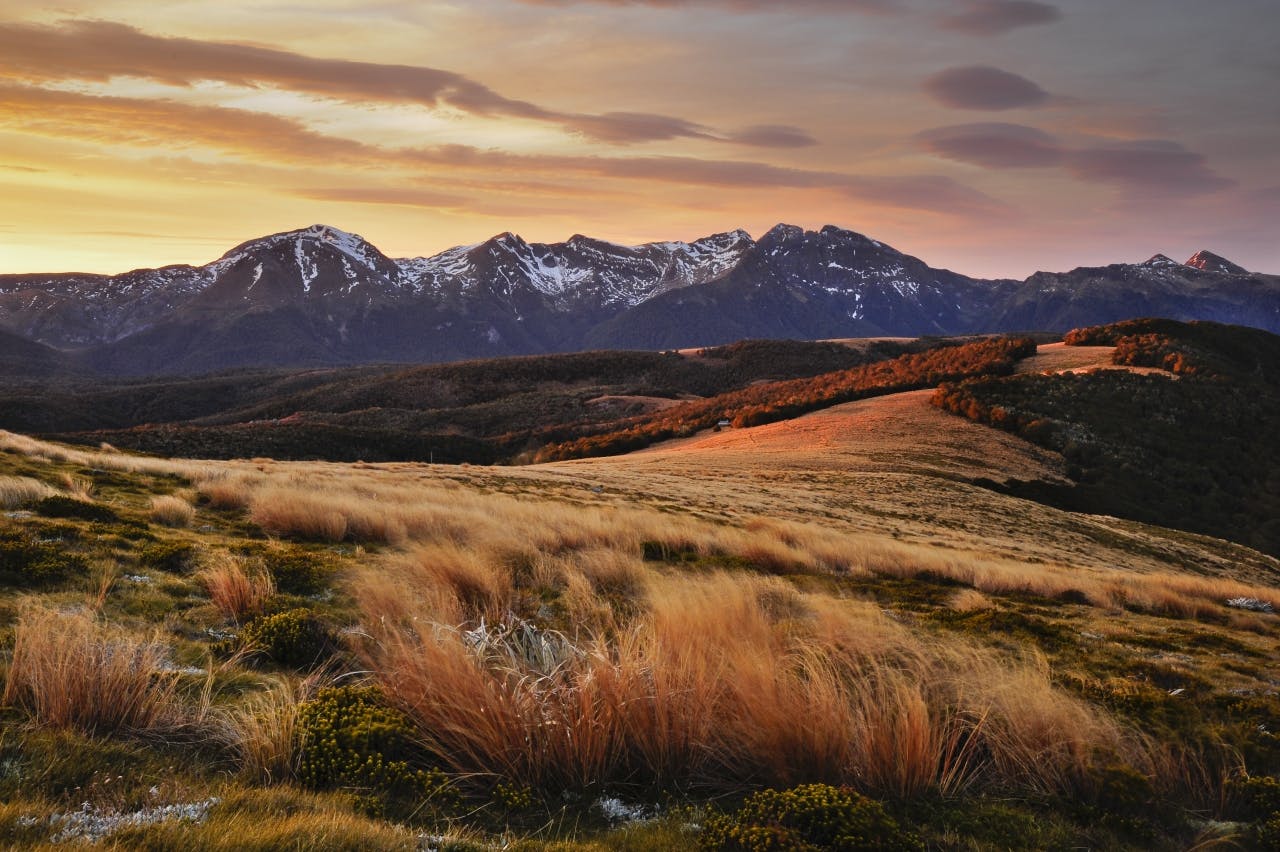- Time
- 3-4hr
- Grade
- Easy
- Accom.
- Balloon Hut, 14 bunks
- Access
- Along the Lake Peel Track, from Cobb reservoir at the end of Cobb Dam Road
- Map
- BP24
Balloon Hut, Kahurangi National Park
Is there any country so mellow, so inviting and so tramper-friendly as the Tableland of Kahurangi National Park? Carpets of beech forest lap the edges and gullies of the undulating tops; a patchwork uncommon in New Zealand where the bush-tops interface is usually more defined. Tussock grasslands dominate where the forest does not, harbouring a range of alpine plants. Balloon Hut lies tucked into the edge of the forest, visible, but unobtrusive. And in the background rise the marble summits of Mt Arthur and the Twins.
Like any place on the tops, the Tableland is exposed to bad weather, but on a good day, like this spring dawn, the place is a paradise. With the Graham Valley access cut off by a large slip, our Nelson Tramping Club group had approached the Tableland from the Cobb, climbing past Myttons Hut and Lake Peel to reach Balloon Hut. It had taken a leisurely few hours, with plenty of stops for photography and rests.
After an enjoyable morning photographing the sunrise washing over the Tableland, we’d trooped up Mt Peel. There, Raymond Salisbury took compass bearings to determine if another 19th century explorer, James Mackay, had indeed been the first Pakeha to discover the Tableland in 1858. Ray’s research seemed to suggest that Mackay had not, and probably took his bearings from a peak on the Lockett Range instead. That would quite likely mean that the discovery of the Tableland was instead made by John Park Salisbury’s brother, Thomas, who first ventured there in 1863.
Historical research done, a steepish, although straightforward, descent down an untracked spur took us back into the Cobb Valley. Happily, the dawn clouds resembling hogbacks – suggestive of bad weather – had amounted to nothing.








